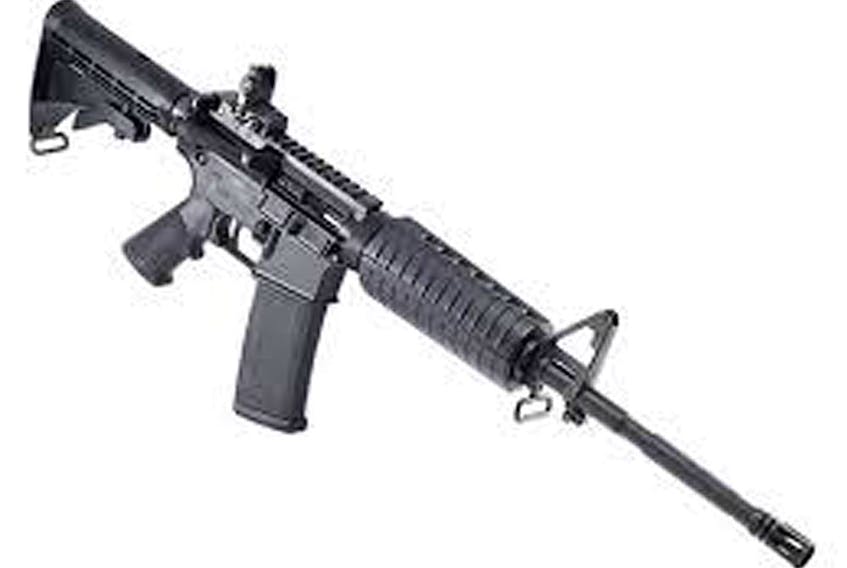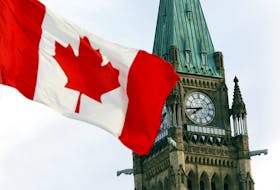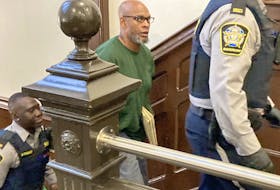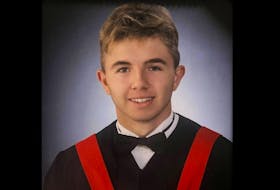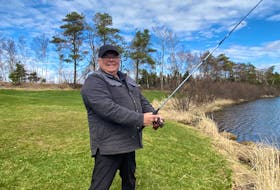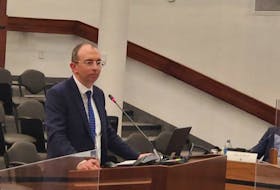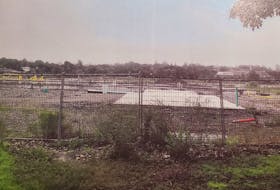OTTAWA – The gunman who murdered 22 people in central Nova Scotia in April, was heavily armed with two semi-automatic rifles, two pistols and special ammunition boxes designed to carry extra bullets when he began his rampage.
Newly obtained documents also reveal all of the weapons were illegally obtained, three of them smuggled across the U.S. border.
The details are contained in a briefing note given to the prime minister just days after the shooting.
The note reveals the full horror of the killer’s shooting spree which went on for 13 hours, ending when he was shot and killed by an RCMP officer at a gas station in Enfield. The gunman impersonated a RCMP officer throughout the evening, driving in a replica RCMP cruiser and wearing a police uniform.
In addition to weapons they believe he used, the killer — whom SaltWire is not naming — was found with the service pistol of RCMP Const. Heidi Stevenson, whom he killed in an earlier shootout.
He was killed by another RCMP officer on the morning of April, 19, a full 13 hours after the shooting began. The rampage is the worst mass-shooting in Canadian history.
The briefing note to the prime minister, obtained through access to information, shows the Dartmouth denturist had a “Colt Law Enforcement Carbine,” a semi-automatic weapon similar to the rifles issued to RCMP officers.
He was also carrying a Ruger mini-14, a semi-automatic rifle that was also used during the Montreal massacre. Both weapons were banned by the Liberals in May.
According to the briefing memo, the Colt was sourced to a California gun shop and was illegally smuggled into Canada. The mini-14 was purchased legally in Canada, but it is unlikely it was bought by the killer, who did not have any firearms licence.
The gunman was also carrying two additional pistols; a Glock GmbH semi-automatic pistol and a Ruger P89 semi-automatic pistol, which were both smuggled in from Maine.

Matt Hipwell, president of Wolverine Supplies, a Manitoba firearms store, said three of the weapons the killer used, the two pistols and the Colt carbine, were restricted firearms at the time of the shooting and depending on the specific characteristics of the weapons they might have been banned entirely in Canada.
As restricted weapons, they would have required the gunman to complete a more detailed safety course and a thorough background check. Those weapons are also only allowed for use at target ranges.
Hipwell, a former RCMP officer, said it is clear gun restrictions would not have stopped the shooting.
“He had no intention of following the law, so banning firearms, banning semi automatic rifles and handguns would not have stopped him,” he said. “There are strict storage and transportation regulations that go along with those firearms. So there’s a lot of boxes and regulations in place already that this individual did not check.”
The mini-14 was not a restricted weapon at the time of the shooting, but would still have required a firearms licence. The Liberal changes in May have since banned the weapon, which was also used at the École Polytechnique shooting in 1989.
Hipwell said while the rifle is used internationally by some police agencies, for most Canadian owners it is a hunting rifle.
He said the Colt carbine rifle would have given the killer the same firepower as RCMP officers, but officers generally don’t use the rifle in all but the worst situations.
In addition to the Colt, the killer’s other assault rifle and the two pistols would have given him more firepower than the officers he encountered.
The briefing memo also mentions “over capacity ammunition boxes,” sourced outside of Canada. Hipwell said that likely means they were equipped with magazines allowing the gunman to fire many more bullets than he normally would have been able to.
In Canada, the pistols would have been limited to 10 bullets, but American versions could carry as many as 18. The rifles would be legally limited to five shots in Canada, but the killer would have been able to fire many more.
In a statement in July after search warrant documents were released, the RCMP said the investigation had so far revealed that the killer made multiple trips to Maine to visit friends.
“Investigators have confirmed that the gunman did communicate with these individuals frequently and visited them on a frequent basis. The full nature and extent of those relationships remain under investigation and as such, no additional information will be provided at this time,” read the force’s statement.
Banning firearms, banning semi automatic rifles and handguns would not have stopped him
The search warrant documents also indicated that the killer was engaged in drug and gun smuggling, but the RCMP cautioned in their statement that only one person of the more than 700 they had interviewed provided that information.
While gun restrictions are much more lax in the United States, all states require that someone be a resident of the state they are in to purchase weapons and people simply visiting are not permitted to buy guns.
The RCMP declined to say whether they were working with U.S. law enforcement. After initially resisting the effort, the federal government called for a public inquiry into the shooting. The force said they will release any additional information there.
“The RCMP recognizes the need to provide the factual account of what transpired this past April. With the public inquiry now ongoing, the most appropriate and unbiased opportunity to do so is with our full participation in the inquiry,” said Sgt. Andrew Joyce with the Nova Scotia RCMP.
“The inquiry is underway and RCMP is fully cooperating. The RCMP will respectfully refrain from further commenting on these matters outside of the inquiry.”
Twitter: RyanTumilty
Email: [email protected]
Copyright Postmedia Network Inc., 2020

